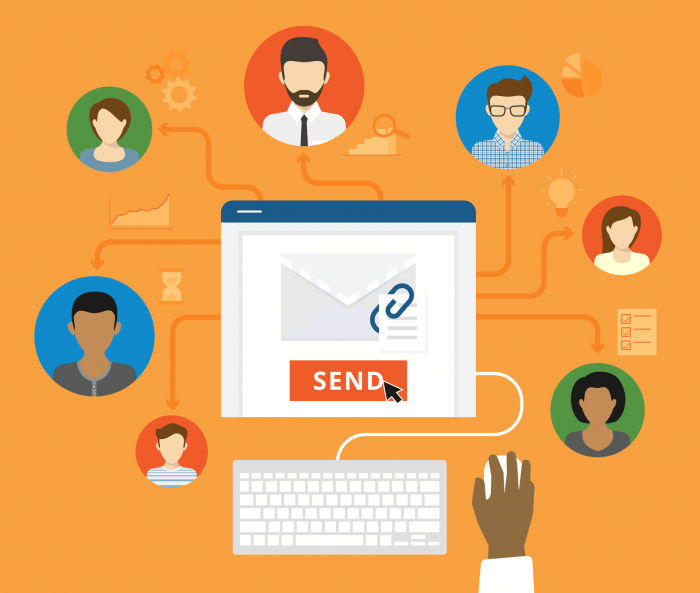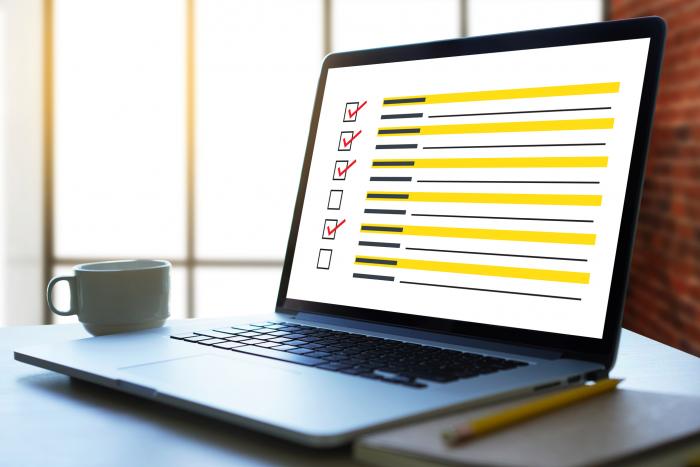There are a plethora of ways to reach consumers and prospective audiences these days. From traditional advertising to social media to influencers, it has never been easier to get your message in front of audiences.
While there are more marketing channels to choose from than ever before, email continues to be one of the most effective ways to reach people.
Nearly 4 billion people are using email globally, including 91% of American internet users. And the global market and consumer data experts at Statista predict that number will continue to grow.
Additionally, email marketing has an average ROI of 4,200%. That’s a $42 return for every $1 spent.
It’s safe to say the best time to jump into email marketing is now!
But should you send emails to everyone on your list? How do you know if those email addresses are correct or up to date? Your email campaign is only as good as your email list, and your ability to get relevant content to everyone on it.
Clean your list
It’s time to pull out that list of emails and give it a closer look. Many marketers forget, but your email list deserves regular maintenance and care just like a vehicle. Even the cleanest lists require some polishing now and then.
You’ll want to delete or update emails that don’t work and get rid of ones that aren’t relevant anymore. You’d be surprised how often subscribers’ emails change. People get new jobs, get new addresses at current jobs, or stop using certain accounts.
Cleaning up your subscriber list ensures you avoid the dreaded deliverability issues. It’s not just annoying, but your bounce rate matters!

If your bounce rates increases, your sender reputation suffers, and your mail is less likely to be delivered. That means all that time you spent crafting the perfect email will be for naught.
To keep a clean list, remove these types of email addresses:
- Duplicate addresses
- Addresses with typos
- Invalid addresses
- Inactive addresses
- Hard and soft bounces
- Completely unengaged addresses
You can go a step further by including a clear and easy way for your subscribers to unsubscribe to your emails. While this may sound counterintuitive, it will prevent subscribers who no longer want your content from marking you as spam.
However, most will never click the unsubscribe button, they’ll just stop opening emails. This effectively unsubscribes people, which pulls your open rates down. That’s why maintaining a clean list is important.
So, how does being labeled “spam” impact your email efforts? If enough people do it you may have trouble delivering to that provider or be blacklisted entirely. Then none of your emails will be delivered.
At the end of the day, you want to send emails to people who want to receive them. If you don’t keep your lists clean and healthy, you run the risk of losing that battle before it even begins.
Divide your list into audiences
Once you’ve cleaned up your subscriber list, consider segmenting your subscribers into smaller groups based on set criteria. Segmented emails can help increase your ROI and give your marketing efforts more impact.

When you segment your lists you can personalize the content you send. You can deliver relevant content based on a subscribers’ location, interests, purchase history, etc.
Instead of creating one mass message for all subscribers, customize emails for each segmented list that caters to their unique or independent traits.
It may seem like extra effort, and it is, but it’s worth it. Subscribers appreciate content that’s curated to their needs.
Even changing a few small elements of an email to cater to a segment can pay large dividends in the long run. In today’s world, we all want what is relevant to us at the time we need it. The closer you can get to delivering that, the better off you will be. Segments can help you achieve this.
Let’s say you want to extend an offer to subscribers who are in a specific state, city, or zip code. You can create a segment that only includes subscribers in these locations and send an email only to those addresses.
Or maybe you want to follow-up with prospects who contacted you in the past but haven’t converted. You can create a segment with these prospects and send a nurture campaign tailored specifically to them.
It’s inevitable that some subscribers will stop engaging by not opening your emails, but list segmentation can even help you maintain a healthy, clean list of subscribers. You could segment these subscribers into their own group and launch a re-engagement campaign.
Those who continue to be disengaged can be removed from the segment altogether. This should help you increase open rates and deliverability.

List maintenance example: StandDesk
At ddm, we helped our client StandDesk clean up and segment its lists. We weeded out invalid addresses for removal and segmented addresses that could not be verified. From there, StandDesk sent emails to unverified addresses in batches to identify which ones would bounce back. Doing this over the course of multiple sends, instead of simultaneously, avoided compromising StandDesk’s sender reputation.
We also helped StandDesk create rules within its platform to identify unengaged contacts. This enabled the StandDesk team to automatically develop an engaged and active list of verified email addresses, ensuring they reach their hottest leads with every email send.
Achieve success with email marketing
Simply put, email marketing is an essential tool for any marketer today, and list maintenance and segmentation are vital elements of any email process. We suggest performing a routine cleaning of your subscriber list at least a couple of times each year and segmenting your lists based on your business goals. You can begin by creating segments for engaged and unengaged subscribers.
Send engaged contacts more direct content with strong calls to action and deliver re-engagement campaigns to unengaged subscribers to nudge them further into the funnel.
When you find email addresses that cannot be verified, put them in their own segment so you can identify the bounces that you need to remove. From there, you can experiment with more detailed segments based on location, interests, or other characteristics.
Delivering the right content to the people who want to receive it is best practice in maintaining an effective email program. Both are necessary to protect your sender reputation, increase your deliverability, and keep your audiences engaged.
Achieve all of the above, and you’ll likely reap the rewards of happy customers and reaching your goals.
